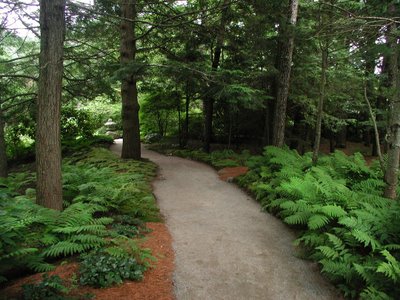
Outdoors, most plants enjoy consistent moisture and shade to part shade. Some varieties, such as Ostrich and Royal can grow in full sun if given very wet conditions. Look for plants that are native to your region. The leaves look great in naturalistic woodland gardens, perennial shade borders, along streams and pond edges, in containers and as groundcover. In warm climates, staghorn varieties can lend a tropical air to a garden when grown attached to a tree trunk. Tree varieties can also be quite impressive as the focal point of a garden bed.
The following are beautiful and adaptable.
- Athyrium niponicum ‘Pictum’, Japanese painted, zones 3-8
- Adiantum pedatum, Maidenhair, zones 4-9
- Osmunda regalis, Royal, zones 3-10
- Osmunda cinnamomea, Cinnamon, zones 3-10
- Dryopteris spinulosa, Common wood, zones 3-10
- Dennstaedtia punctilobula, Hayscented, zones 3-9
- Polystichum acrostichoides, Christmas, zones 3-8
- Polystichum munitum, Sword, zones 8-11
- Matteuchia pennsylvanica, Ostrich, zones 2-9

Propagating Your Ferns
The plants are most easily multiplied by division. For houseplants, divide when clumps get crowded or when lots of new offshoots are growing. Plant each section in a small pot. In the garden, divide established plants in spring before new growth appears. Dig up the whole clump and saw or pry the sections apart. Replant at the same soil level as before and water well. Ambitious gardeners may want to try growing them from spores.

No comments:
Post a Comment